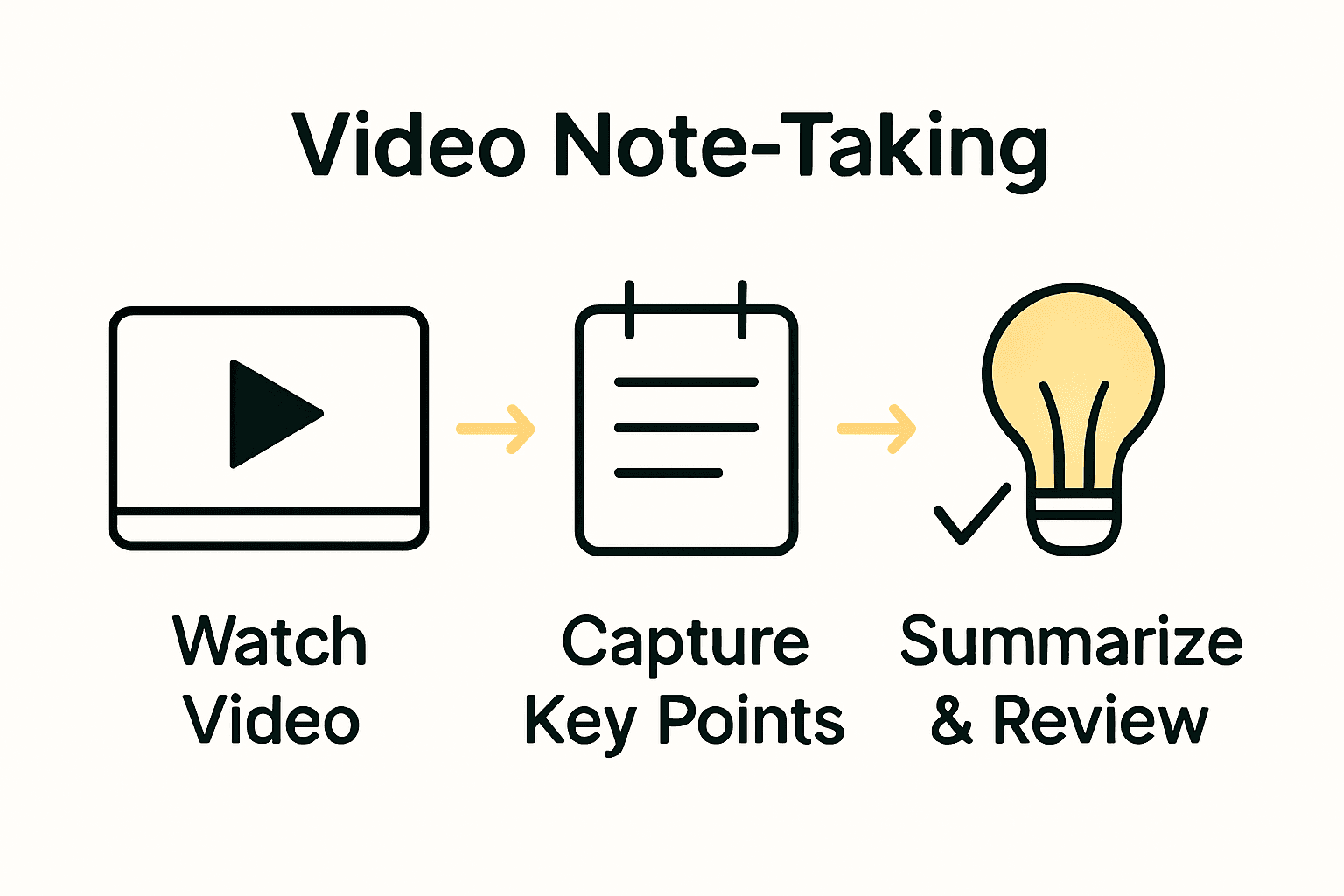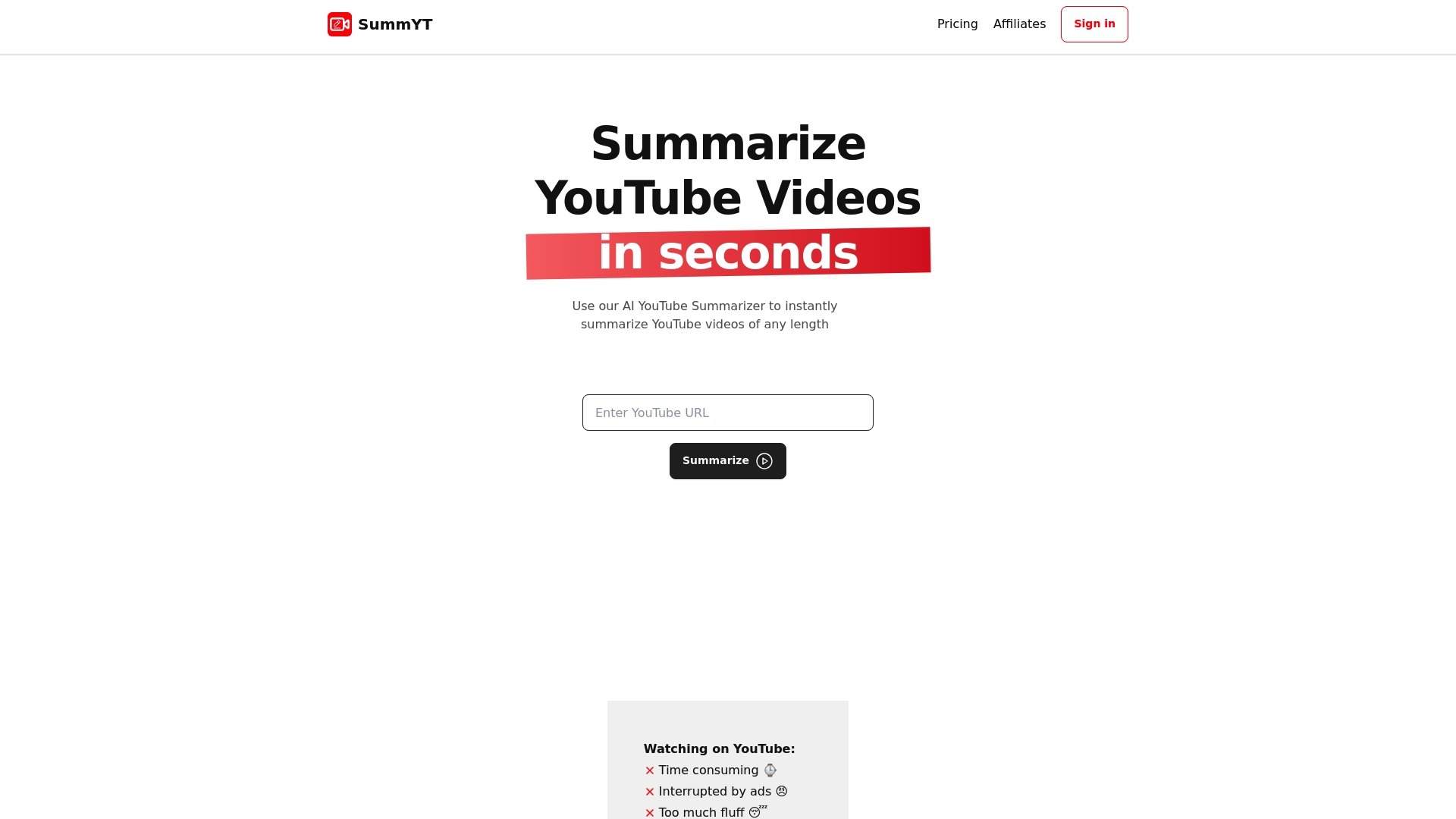Video Note-Taking Guide: Everything You Need to Know

Did you know that effective video note-taking can help reduce study time by over 50 percent? With so much valuable information locked away in lectures and tutorials, many people struggle to keep up or remember key points. Making the most of video content is not about writing down every word. It is about smart strategies that turn complex footage into clear, memorable notes for faster learning and stronger retention.
Key Takeaways
| Point | Details |
|---|---|
| Active Learning | Video note-taking enhances engagement by turning passive viewing into an active learning process. |
| Effective Methods | Various note-taking techniques, including text-based and visual methods, cater to different learning styles and improve information retention. |
| Tool Features | Advanced note-taking tools should facilitate intelligent content extraction and multimodal summary features to enhance comprehension. |
| Challenge Mitigation | Address common challenges like cognitive overload and context loss through intentional strategies and reflection intervals. |
Table of Contents
- Defining Video Note-Taking And Its Benefits
- Types Of Video Note-Taking Methods Explained
- Key Features Of Effective Note-Taking Tools
- Best Practices For Accurate And Efficient Notes
- Common Challenges And How To Avoid Them
Defining Video Note-Taking and Its Benefits
Video note-taking transforms passive video watching into an active learning experience, turning hours of content into concise, actionable insights. Unlike traditional note-taking methods that rely on static text, video note-taking involves strategically capturing key information from dynamic video content across lectures, tutorials, interviews, and professional presentations.
According to Harvard’s Academic Resource Center, effective video note-taking isn’t about transcribing every single word. Instead, it’s a strategic process that involves:
- Watching the entire video first to understand overall context
- Using time markers for efficient future review
- Watching at normal speed to maximize comprehension
- Focusing on key concepts rather than verbatim transcription
The primary benefits of video note-taking include accelerated learning, improved retention, and enhanced knowledge management. By distilling complex information into clear, structured notes, learners can:
- Reduce study time by 50% or more
- Create personalized reference materials
For those looking to read more about efficient note-taking strategies, understanding these fundamental principles can transform how you consume and retain video-based information.
Types of Video Note-Taking Methods Explained
Video note-taking isn’t a one-size-fits-all approach. Different methods suit different learning styles, content types, and personal preferences. Annotation techniques range from traditional text-based strategies to more creative, visual approaches that can significantly enhance information retention and understanding.
Text-Based Note-Taking Methods
Traditional text-based methods remain popular for their simplicity and directness. These include:
- Linear Notes: Sequential recording of key points in chronological order
- Cornell Method: Dividing notes into sections for main ideas, details, and summary
- Outline Method: Hierarchical organization of information using indentations and bullet points
Visual Note-Taking Techniques
Here’s a comparison of popular video note-taking methods and their features:
| Method | Style | Key Advantages | Ideal For |
|---|---|---|---|
| Linear Notes | Text-based | Simple Chronological |
Basic lectures Quick reviews |
| Cornell Method | Text-based | Structured Highlights concepts |
In-depth study Organized review |
| Outline Method | Text-based | Hierarchical Easy scanning |
Detailed lessons Themes |
| Sketchnoting | Visual-based | Engaging Boosts retention |
Visual learners Complex topics |
According to Wikipedia, sketchnoting represents a powerful alternative to traditional note-taking. This visual method combines illustrations, symbols, and text to capture information creatively. Sketchnoting can:
- Enhance engagement with video content
- Improve memory retention
- Make complex information more digestible
- Stimulate right-brain creative thinking

For professionals seeking more advanced video research techniques, understanding these diverse note-taking approaches can transform how you process and remember information from video content.
Key Features of Effective Note-Taking Tools
Effective note-taking tools are more than simple recording platforms—they’re intelligent systems designed to transform raw video content into actionable, easily digestible knowledge. Modern tools leverage advanced technologies to go beyond basic transcription, offering features that dramatically enhance learning and information retention.
Intelligent Content Extraction
Cutting-edge research demonstrates the importance of sophisticated content processing. According to research on NoteIt, advanced note-taking tools should focus on hierarchical information extraction. This means automatically identifying:
- Core structural concepts
- Key ideas and supporting details
- Contextual relationships between information points
Multimodal Summary Features
Research from the FastPerson project reveals another critical feature: multimodal context preservation. As detailed in their research paper, effective tools can reduce video viewing time by over 50% while maintaining comprehensive understanding. Key capabilities include:
- Preserving linguistic context
- Capturing visual information nuances
- Generating concise, comprehensive summaries
For professionals seeking more insights into efficient learning strategies, understanding these advanced tool features can revolutionize how you consume and retain information from video content.
Best Practices for Accurate and Efficient Notes
Video note-taking is a skill that requires strategic preparation and execution. Unlike traditional text-based note-taking, capturing information from video demands a more dynamic and intentional approach that maximizes comprehension and retention.
Pre-Watching Preparation
According to the University of Reading, effective note-taking begins before you even start watching the video. Key preparatory steps include:
- Clarify your learning objectives
- Understand the video’s core purpose
- Identify specific information you want to extract
- Have your note-taking tools ready
Active Note-Taking Techniques
Research from NotedCut reveals practical strategies for capturing notes efficiently:
- Use micro-shorthand to speed up writing
- Implement jump markers for quick navigation
- Create standardized tags for easy categorization
- Use ±10-second skips instead of constant pausing
- Maintain consistent naming conventions for note exports
For professionals looking to enhance their video research skills, mastering these note-taking techniques can transform how you process and retain information from video content.

Common Challenges and How to Avoid Them
Video note-taking isn’t without its pitfalls. Cognitive overload and information retention present significant challenges that can derail even the most well-intentioned learning efforts. Understanding these obstacles is the first step toward developing more effective note-taking strategies.
Technological Dependency Risks
A critical challenge emerges from over-reliance on technological solutions. Recent research highlights a nuanced finding: fully automated note-taking can paradoxically reduce cognitive engagement. This means that while technology offers incredible support, it shouldn’t completely replace active mental processing.
Key Challenges to Navigate
Effective note-takers must be aware of and strategically address several common obstacles:
- Passive Absorption: Avoiding mindless copying without understanding
- Information Overload: Preventing cognitive burnout by selective note-taking
- Context Loss: Maintaining the broader narrative while capturing specific details
- Distraction Management: Staying focused during video content
Strategic Mitigation Approaches
To combat these challenges, consider implementing:
- Intentional pausing and reflection intervals
- Active summarization after key sections
- Periodic self-checking for comprehension
- Using hybrid note-taking methods combining manual and technological tools
For professionals seeking deeper insights into efficient learning techniques, understanding these challenge mitigation strategies can significantly enhance your video note-taking effectiveness.
Transform Your Video Note-Taking With SummYT
Feeling overwhelmed by information overload and endless note-taking from videos? The struggle to capture key details, avoid passive absorption, and manage cognitive burnout is real. As discussed in this guide, accurate video note-taking demands active engagement, strategic summarization, and tools that turn chaos into clarity. With SummYT, you no longer have to spend hours re-watching, pausing, and scribbling notes. Our AI-powered platform creates structured, concise summaries from any YouTube video and helps you focus only on the key insights you need.

Ready to reclaim your time and boost your productivity? Visit SummYT now to experience rapid video summarization for lectures, tutorials, podcasts, and more. Explore how you can learn more efficiently with our proven note-taking tools, or dive into our guide on efficient note-taking strategies to supercharge your study process. Act now and turn any long video into actionable insights in minutes instead of hours.
Frequently Asked Questions
What is video note-taking and how does it differ from traditional note-taking?
Video note-taking is an active learning technique that involves capturing key insights from video content, such as lectures and tutorials. Unlike traditional note-taking, which often involves transcribing words, video note-taking focuses on extracting essential concepts and using techniques like time markers for efficient review.
What are some effective methods for video note-taking?
Popular video note-taking methods include linear notes, the Cornell method, the outline method, and sketchnoting. Each method varies in structure and style, allowing learners to choose one that best suits their needs and enhances their retention of information.
How can I enhance my video note-taking skills?
To improve your video note-taking, prepare by clarifying your learning objectives, use micro-shorthand for efficiency, implement jump markers for easy navigation, and maintain focus by avoiding passive absorption of content.
What challenges might I face when taking notes from videos, and how can I overcome them?
Common challenges include cognitive overload, context loss, and distraction management. To mitigate these issues, practice intentional pausing, active summarization, and using a combination of manual and technological note-taking methods.



